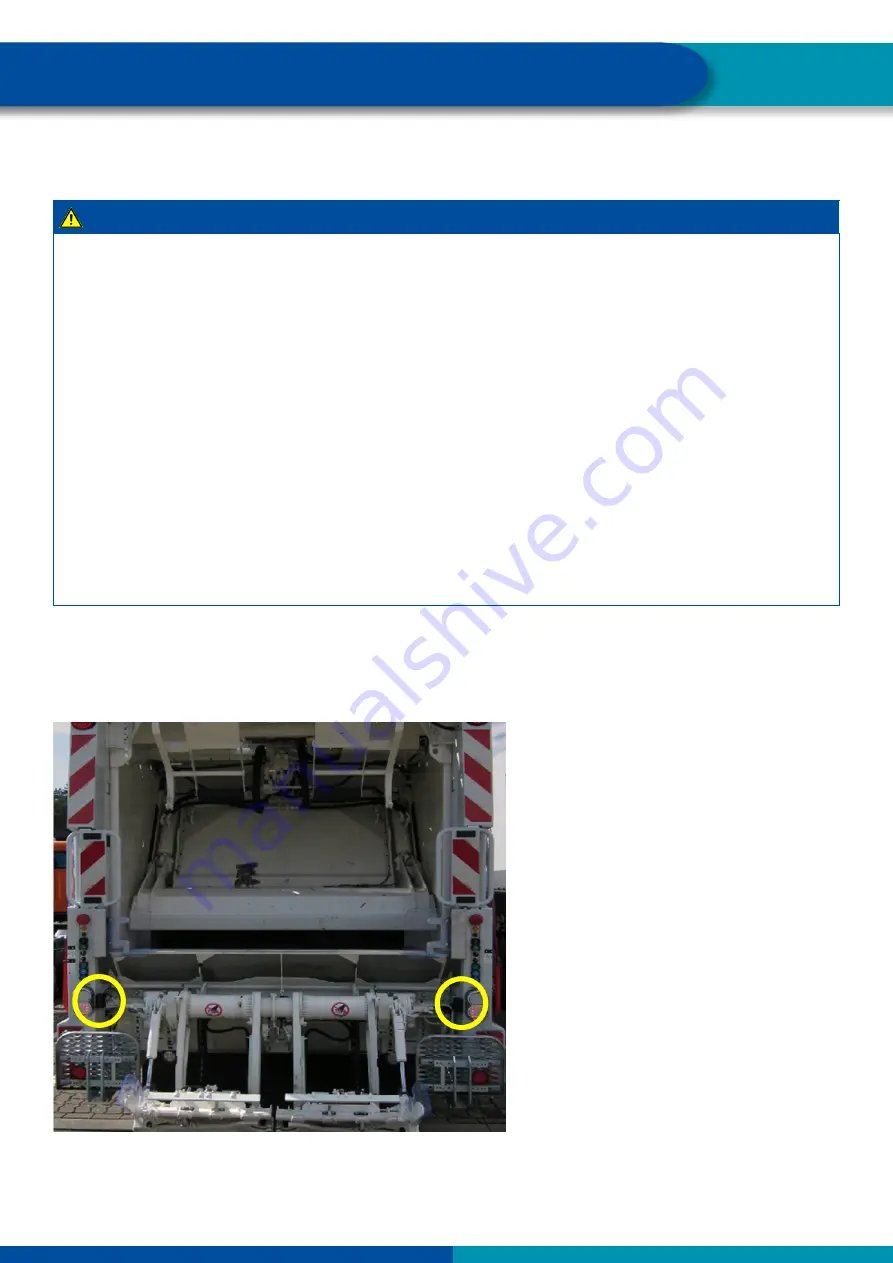
22
6.2
Positioning of the sensors on refuse collection vehicles
Observe the following safety instructions for handling cables:
Water that enters the cable core or cable sleeve can damage electronic
control units. Cables with open ends should therefore always be
connected in the driver’s cab to ensure that no water can enter them.
Where this is not possible, use a suitable cable joint box, e.g. AK 190.
This
applies in particular when using the prepared brake interface on the
Daimler Econic Euro6.
Plan your installation position so that cables cannot become kinked.
Fasten the cables and connectors so that the plug connections are not
subjected to any tensile stress or lateral forces.
Never route cables over sharp edges or in the vicinity of aggressive media
(e.g. acids).
Route the cable to the connections so that no water can enter the
connector.
Fasten the cable ties so that the cable is not damaged.
When using tools, please note the instructions of the cable-tie
manufacturer.
If the cables are too long, do not wind them up but lay them in loops.
The three standard applications shown here are predominantly designed for vehicles with flat rear sections.
The positioning of the sensors on refuse collection vehicles with their far-protruding and extremely varying lifting and
tipping mechanisms, on the other hand, must usually be adapted to accommodate the respective mechanisms.
Here are some tried and tested examples:
With this lifting and tipping mechanism, just two ultrasonic sensors were installed on one plane. A middle sensor was
not installed on account of the hydraulic lifter. Nevertheless, the detection of objects behind the vehicle proved to be
adequate.
Installation of the ultrasonic sensors
Содержание TAILGUARD
Страница 1: ...TAILGUARD FOR REFUSE COLLECTION VEHICLES...
Страница 2: ...2...
Страница 40: ...40 Notes...
Страница 41: ...41 Notes...
Страница 42: ...42 Notes...
Страница 43: ......
















































